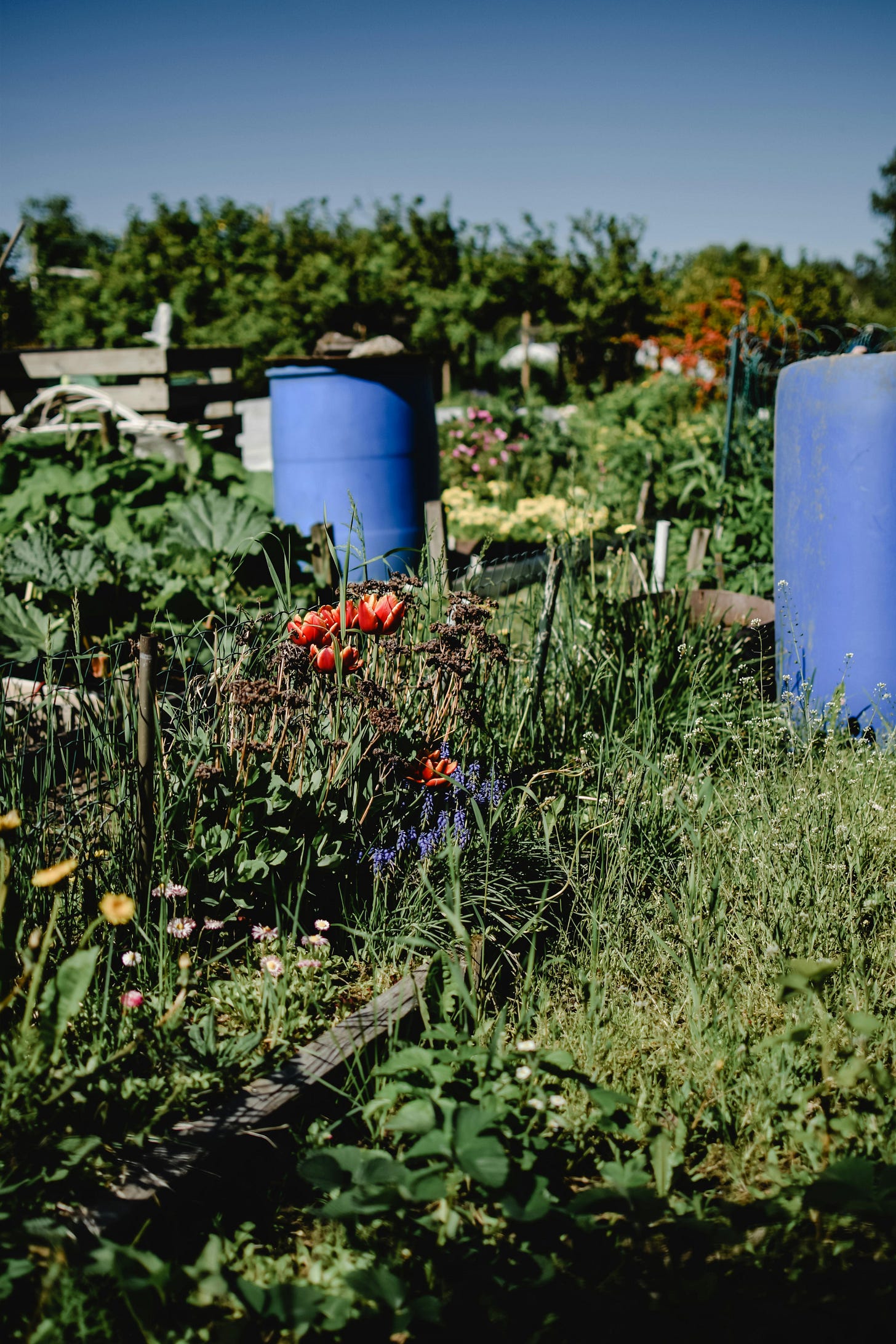Prefigurative Community Building (Part 3): Weaving Power With the Land
How to Start a Community Garden or Guerrilla Gardening Project Without Reproducing Power Over
In a time of economic precarity, climate instability, and social fragmentation, growing food together has become more than an act of sustainability. It is an act of collective resistance and renewal. Community gardens and guerrilla gardening projects represent one of the most tangible and accessible ways to practice Power With—a form of coordination rooted in mutual trust, shared agency, and care for both human and nonhuman life.
Unlike hierarchical structures that replicate Power Over, Power With gardening centers relationship, reciprocity, and self-determination. It transforms how we relate to land, to each other, and to the systems that try to separate us from both.
Below is a practical, grounded guide to starting your own Power With garden project, step by step.
Step 1: Start Small, Start Together
Avoid starting as an individual “organizer” who recruits others. This risks concentrating decision-making and recreating hierarchy. Instead:
Form a core pod of 2–6 people who share interest and trust.
Host a conversation about what kind of garden you all want to build, why, and how you want to relate to each other and the land.
Establish shared values (such as transparency, consent, non-domination, accessibility, and ecological respect).
👉 Resource: The Consentful Garden Toolkit
Step 2: Find a Space—Or Let It Find You
You don’t need formal permission to start a relationship with land. In fact, guerrilla gardening embraces unused or abandoned plots as sites of restoration and reclaiming.
Options include:
Vacant lots or neglected corners of public space.
Edges of sidewalks or roadsides.
Yards offered by neighbors or local organizations.
Rooftops, balconies, or shared spaces in apartment buildings.
Approach with care:
Spend time observing the site before planting.
Bring offerings or spend time listening before altering it.
If it’s on public or contested land, be aware of potential conflict and plan for non-confrontational presence.
👉 Resource: Guerrilla Gardening Guide by Ron Finley
👉 Resource: Falling Fruit Map – find free, forageable resources near you.
Step 3: Design for Inclusion, Not Control
Instead of assigning roles or managing volunteers, let participation emerge organically through open invitations and horizontal coordination.
Host regular open hours for planting, tending, and learning together.
Use a living map or journal (chalkboard, shared Google Doc, painted sign) that anyone can contribute to or learn from.
Incorporate multiple languages and accessible formats.
Create “choose-your-own-way” pathways for involvement (e.g., growing, storytelling, seed saving, art, harvesting, composting).
Let the garden grow in complexity as more people become part of its story.
👉 Resource: Permaculture Principles – a great foundation for designing systems that are adaptive and people-powered.
Step 4: Source Plants and Materials Collectively
Avoid top-down planning or imposing your own preferences about what “should” be grown.
Instead:
Host a seed swap or plant share.
Ask elders and neighbors about traditional, local, or culturally important crops.
Incorporate native species and pollinator-friendly plants.
Collect materials from local waste streams (e.g., cardboard for sheet mulching, used containers for planting).
Invite people to contribute what they can—not what they “should.”
👉 Resource: Seed Savers Exchange
👉 Resource: TrashBackwards / Upcycle It – upcycling inspiration for DIY gardening.
Step 5: Let Power With Guide Conflict and Change
Conflicts, differing visions, or tension with institutions may arise. Keep your process rooted in Power With:
Use consensus or sociocratic methods for group decisions.
Create a conflict culture that values listening, repair, and shared responsibility rather than blame or authority.
If threatened by eviction or destruction, use collective storytelling, public support, and care (not confrontation) as tools of defense.
Let your coordination adapt and evolve in relationship with the people, the land, and the moment.
👉 Resource: Seeds for Change: Consensus Handbook
👉 Resource: Beautiful Trouble – Constructive Conflict
Step 6: Celebrate and Share the Harvest
A Power With garden isn't just about food—it’s about joy, ritual, and community resilience.
Host a solstice meal, storytelling night, or harvest party.
Invite others to take cuttings or seeds to plant elsewhere.
Document the project through collective photos, zines, or oral histories.
Celebrate what is growing not as an achievement but as a weaving—many hands, many roots, many futures.
Existing Examples of Power With Gardening in Action
South Central Farm (Los Angeles, CA)
Originally one of the largest urban gardens in the U.S., this 14-acre community project fed over 350 families before it was bulldozed in 2006. While no longer active in its original form, it remains a legendary example of collective land stewardship and resistance to displacement.
🔗
https://southcentralfarmers.com/
Concrete Jungle (Atlanta, GA)
Started by a few friends mapping fruit trees in the city, this project blossomed into a large-scale volunteer network that harvests surplus urban fruit and delivers it to communities facing food insecurity—blending guerrilla foraging with mutual aid.
🔗
Final Thoughts
To plant a garden with others is to grow a different kind of power—one that nourishes instead of extracts, that listens instead of orders, that spreads rather than consolidates. You don’t need to be an expert, a leader, or a savior. You just need to begin, together.
Every seed planted in shared soil is a seed planted in the collective future.
Ready to grow something?





You cannot fix a broken system with its own broken tools, and participation is perpetuation. Only revolution or subversion are ethical.
To overcome entrenched systems requires a grass-roots parallel society based on formalized best practices ( and enabled by an open-source, encrypted, mesh internet ).